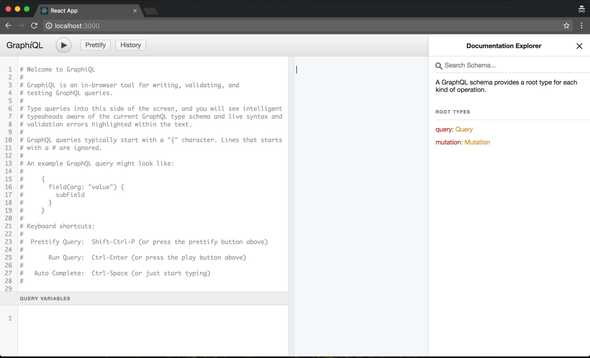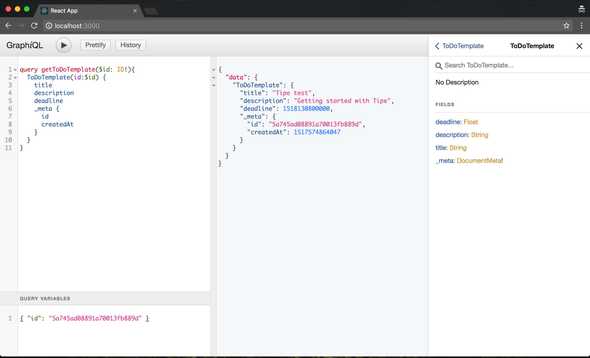February 05, 2018
Set up GraphiQL IDE for Tipe
In a previous article I mentioned Tipe which is a GraphQL software as a service provider “under construction”. Well, their beta version has been available since the 2nd of February and as they have a cute cat logo, I signed up immediately. I saw that currently it’s quite hard to check the GraphQL schema of the endpoint. Although the GraphQL playground implementation is on their roadmap, it’s not available yet. So I decided to set up a GraphiQL IDE locally for Tipe.
The code is available on GitHub: https://github.com/nandito/tipe-graphiql
Tipe
So far I’ve just been playing with the Tipe’s admin interface. I’ve created some folders, templates and documents. I miss many things from their service but I know they are in beta phase so I would not complain about anything.
Create React App
Tipe provides an API endpoint and we have to use custom request headers to get our project’s data. I used create-react-app for bootstrapping the project. This way I saved the time of the build configuration.
$ npm install create-react-app -g # install create-react-app globally
$ create-react-app tipe-graphiqlThis creates the tipe-graphiql project folder with all the necessary React configurations.
Add GraphiQL dependency
Next I added graphiql as a dependency and ran the installer script.
$ cd tipe-graphiql
$ yarn add graphiql # or npm install graphiql --save
$ yarn install # or npm installNow that everything is installed, it’s time to add GraphiQL to the app and remove all the unused Create React App code.
Replace sample React code with GraphiQL
Edit the src/index.js file: remove the service worker and the imported App component, then paste the code from the GraphiQL’s GitHub page.
import React from 'react';
import ReactDOM from 'react-dom';
import GraphiQL from 'graphiql';
import fetch from 'isomorphic-fetch';
import './index.css';
import '../node_modules/graphiql/graphiql.css'
const API_KEY = 'your_api_key';
const ORG_SECRET_KEY = 'your_org_secret';
function graphQLFetcher(graphQLParams) {
return fetch('https://api.tipe.io/graphql', {
method: 'post',
headers: {
'Content-Type': 'application/json',
'Authorization': API_KEY,
'Tipe-Id': ORG_SECRET_KEY,
},
body: JSON.stringify(graphQLParams),
}).then(response => response.json());
}
ReactDOM.render(, document.getElementById('root'));I used the Tipe’s GraphQL API request docs to set up the request credentials. The endpoint url (https://api.tipe.io/graphql) seems generic, that’s why I didn’t extract it as a constant. The API_KEY and ORG_SECRET_KEY constants should be replaced with your own credentials. You can find some guides in the linked docs to get them.
I also had to include the GraphiQL styles by importing its css file from the node_modules folder.
Then I set the height in the src/index.css to stretch the IDE to fill the whole page.
body {
margin: 0;
padding: 0;
font-family: sans-serif;
}
html, body, #root {
height: 100%;
}Clean up
As I don’t use the App component and the service worker, their files can be removed.
$ rm ./src/App.*
$ rm ./src/logo.svg
$ rm ./src/registerServiceWorker.jsRun the app locally
Now the app server can be started and when it runs, the GraphiQL IDE is available in the browser (http://localhost:3000/).
$ yarn start # or npm startNow I can browse the schema and test the queries!

